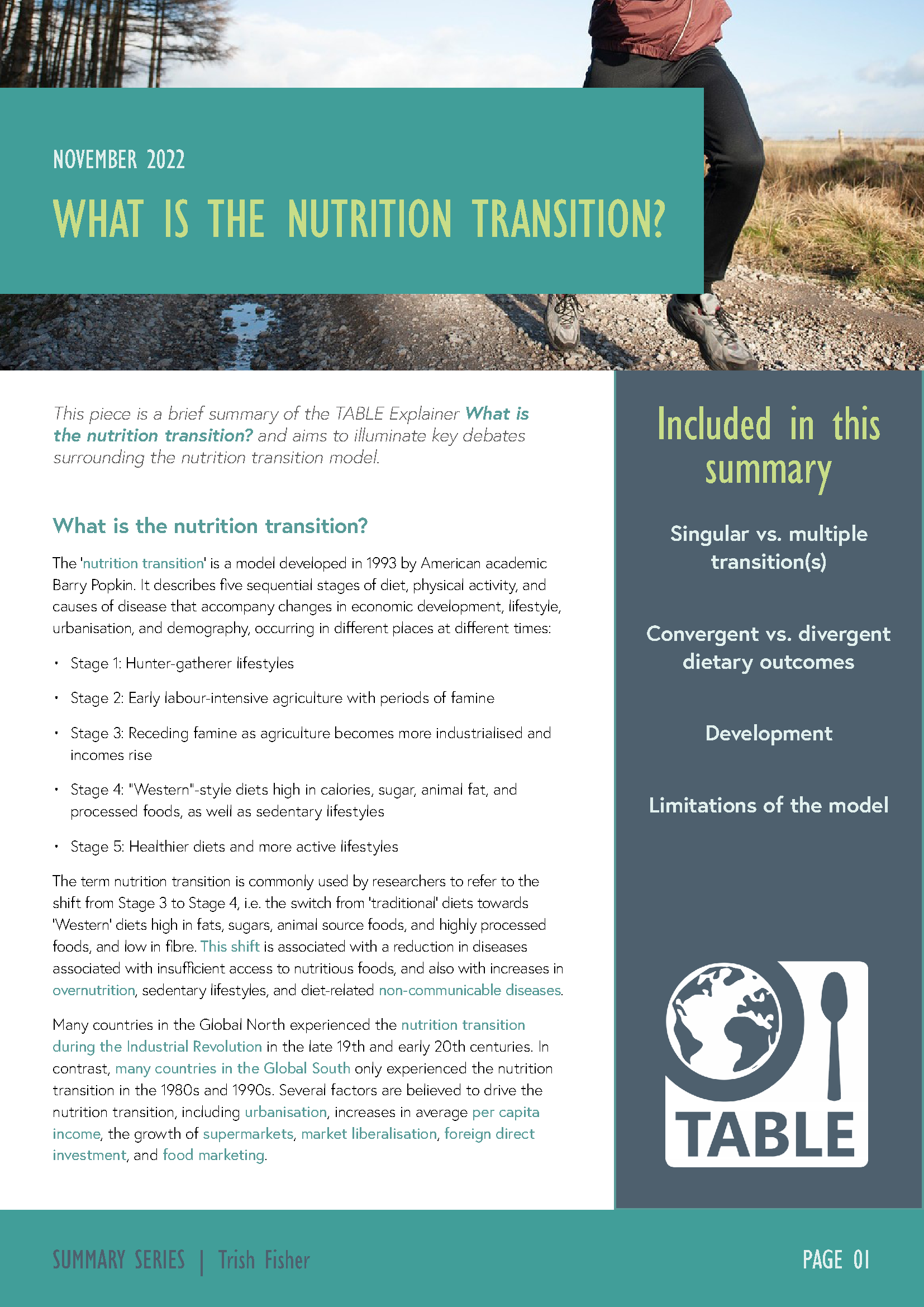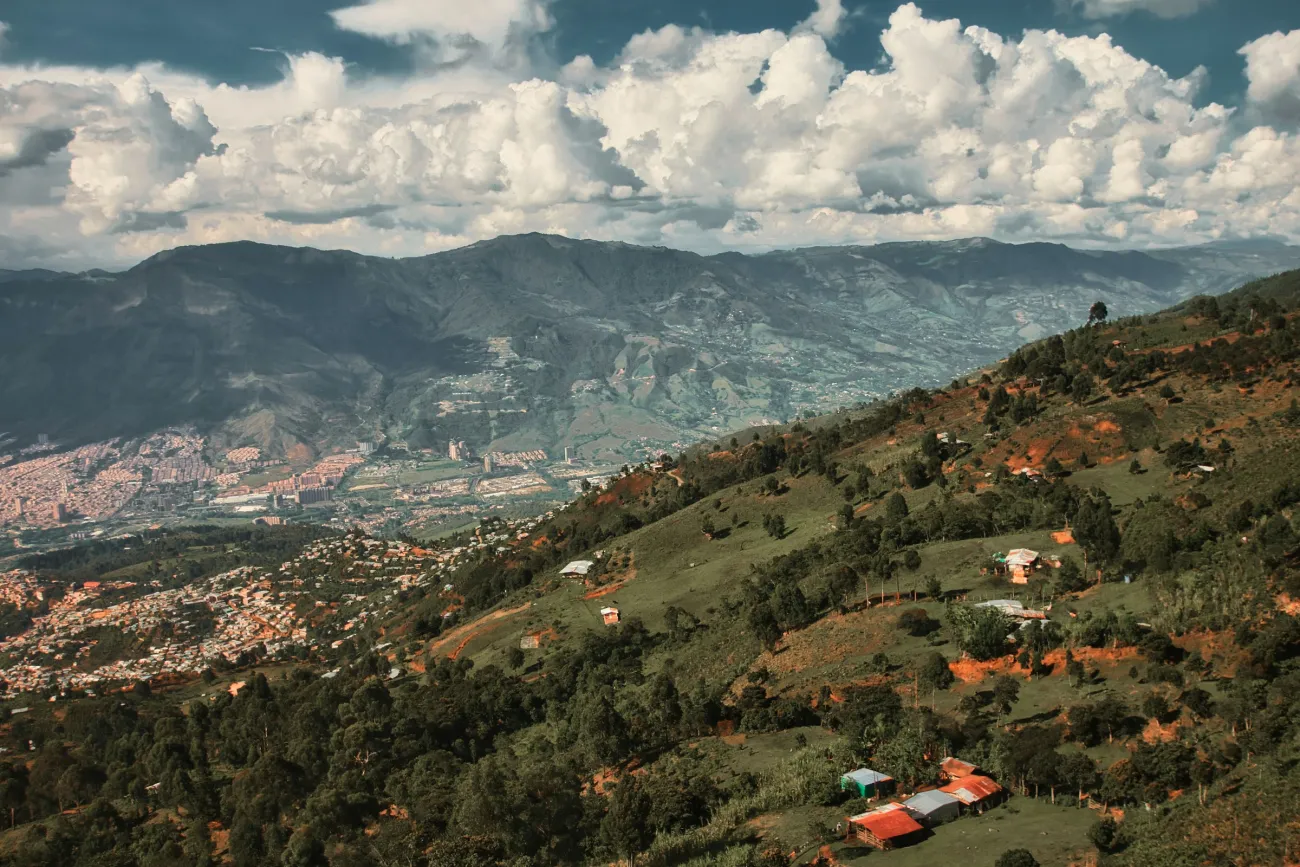Debates surrounding the nutrition transition
As the nutrition transition model has gained traction within and beyond academia, various criticisms and qualifications of the nutrition transition model have emerged.
Singular vs. multiple transition(s)
Popkin’s conception of the nutrition transition assumes a singular transition in diet and lifestyle that occurs between each stage in the model. In contrast, Lang and Rayner understand the nutrition transition to be comprised of three separate but overlapping transitions in diet, physical environment, and culture. This alternative theory of multiple transitions is underpinned by evidence demonstrating that disease risk factors associated with the nutrition transition don’t necessarily change simultaneously or at the same rate, suggesting other factors at play beyond diet and physical activity. Lang and Rayner underscore that obesity policy must tackle diet, physical environment, and culture, in an interconnected way, to be effective.
Convergent vs. divergent dietary outcomes
The nutrition transition model describes a global convergence towards Western dietary patterns. However, Hawkes has found evidence of both convergent and divergent dietary outcomes. While diets are generally shifting towards much higher consumption of processed foods, the types, brands, and marketing techniques of these processed foods are customised to local cultures and preferences. As such, the shift towards processed foods is shaped by local dietary customs, rather than a universal shift towards ‘Western’ dietary patterns. Hawkes also notes that supermarket expansion, while making global diets more homogenous, could increase the diversity of food (including healthy foods) available to individuals.
The nutrition transition and development
The five-stage nutrition transition model assumes that countries in the Global South will follow roughly the same social, technological, and economic development pathway as countries in the Global North. However, critics argue that many of the development mechanisms employed by high- income countries (e.g. protection of domestic industries) are unavailable to low- and middle-income countries today, and hence some countries may not make a sequential transition from earlier to later stages of the model.
Limitations of the nutrition transition model
Other criticisms of the nutrition transition model focus on the model’s oversimplification of historical phenomena and difficulty in measuring transitions between stages in the model. For example, the model specifies that famine risk is concentrated in Stage 2 (early, labour-intensive agriculture). However, this assumption may idealise hunter-gatherer societies which experience seasonal variation in food availability, particularly in cold climates. Others argue that current dietary measurement tools cannot adequately capture the nutrition transition and thus studies on the nutrition transition rely on proxies of dietary change (e.g. body weight and food availability), rather than concrete data on changing diets. According to this perspective, it’s impossible to determine whether the evidence actually supports the details of the nutrition transition model given how little is known about actual food consumption in many populations, particularly in low- and middle-income countries.
Finally, Stage 5 remains largely hypothetical, with some exceptions. In a few high-income countries such as Japan and Singapore, consumption of salt, sugar, and fat from processed food has levelled off, driven in part by slowly declining consumption of processed food. In wealthy countries, people with higher socioeconomic status tend to have a lower body mass index and eat more nutritiously than those with lower socioeconomic status, indicating that at least some segments of the population in the Global North have transitioned or are transitioning to Stage 5.







Comments (0)